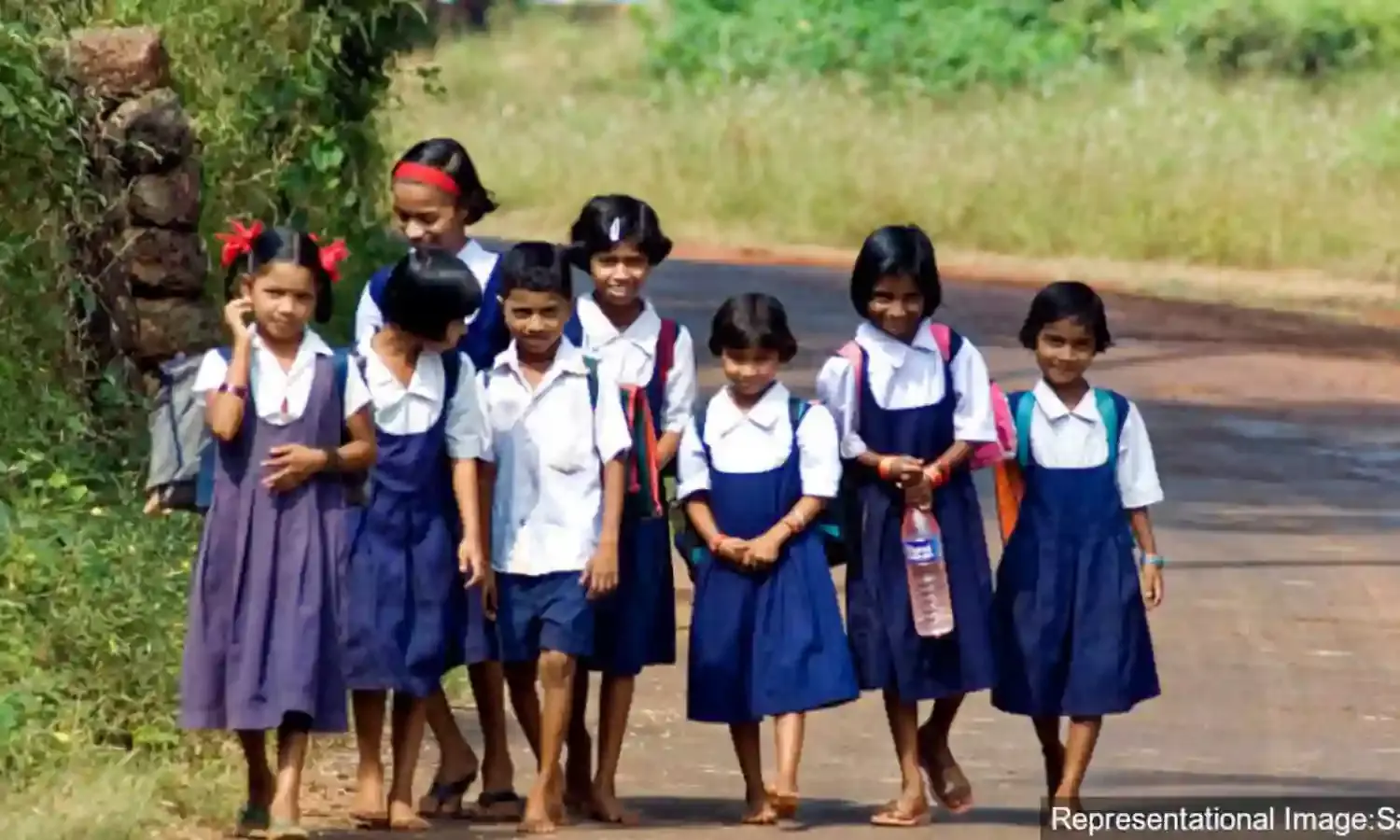ஒரு மாணவருக்கான கல்விச்செலவு அதிகரித்துள்ளது; ஆனால் அரசு பள்ளிகளில் சேர்க்கை குறைவு: ஆய்வு

மும்பை: பீகார், மத்தியப்பிரதேசம் (ம.பி.), ராஜஸ்தான் மற்றும் ஒடிசா உள்ளிட்ட இந்தியாவின் ஏழ்மையான சில மாநிலங்களில் ஒரு மாணவருக்கான தொடக்க மற்றும் இடைநிலை கல்விக்கான பள்ளிச்செலவு 2014-15 உடன் ஒப்பிடும்போது, 2017-18ஆம் ஆண்டில் அதிகரித்துள்ளது; ஆனால் எட்டு மாநிலங்களின் பகுப்பாய்வின்படி, இதே காலகட்டத்தில் அரசுப்பள்ளிகளில் மாணவர் சேர்க்கை குறைந்துள்ளதாக, டெல்லியை சேர்ந்த அக்கவுண்டபிளிட்டி இனிஷியேட்டிவ் (Accountability Initiative) அமைப்பின் ஆய்வு கூறுகிறது.
பீகாரில் ரூ.9,573 என்று தொடங்கி, இமாச்சல பிரதேசத்தில் ரூ.59,499 என, மாநிலத்திற்கு மாநிலம் ஒரு மாணவருக்கு செலவிடப்பட்ட கல்வித்தொகையானது மாறுபடுகிறது. தொடக்கக்கல்விக்கு (1 முதல் 8ம் வகுப்பு வரை) ஒப்பிடும்போது, சராசரியாக மாநிலங்கள் ஒரு மாணவருக்கு மேல்நிலைக்கல்விக்கான (9 முதல் 12 ஆம் வகுப்பு வரை) அதிகம் செலவிட்டது ஆய்வில் கண்டறியப்பட்டுள்ளது. இந்த எட்டு மாநிலங்களும் நாட்டின் பல்வேறு பகுதிகளை உள்ளடக்கியது என்பதால் தேர்வு செய்யப்பட்டுள்ளதாக ஆய்வில் தெரிவிக்கப்பட்டுள்ளது.
பள்ளிக்கல்விக்கு ஒரு மாணவருக்கான செலவு

Source: Accountability Initiative, Centre for Policy Research
எட்டு மாநிலங்களில், பீகார் 2017-18 ஆம் ஆண்டில் அரசு மற்றும் அரசு உதவி பெறும் பள்ளிகளில் அதிக எண்ணிக்கையிலான மாணவர்களை (2.16 கோடி) கொண்டிருந்தது. பகுப்பாய்வு செய்யப்பட்ட எட்டு மாநிலங்களில் மிகக்குறைந்த அளவாக இமாச்சலப் பிரதேசம் 9,00,000 மாணவர்களை கொண்டிருந்தது.
கடந்த 2014-15ஆம் ஆண்டுடன் (76 லட்சம்) ஒப்பிடும்போது 2017-18 ஆம் ஆண்டில் (83 லட்சம்) அதிகமான மாணவர்கள் அரசுப்பள்ளிகளில் சேர்ந்துள்ள ராஜஸ்தான் தவிர, பகுப்பாய்வு செய்யப்பட்ட அனைத்து மாநிலங்களிலும் மாணவர்கள் சேர்க்கை குறைந்திருந்தது.
இருப்பினும், திரும்ப புலம்பெயர்தல் மற்றும் கோவிட் -19 ஊரடங்கால் ஏற்படும் பொருளாதாரத் துயரங்கள் காரணமாக அரசுப் பள்ளிகளில் சேர்க்கை அதிகரிக்க வாய்ப்பு இருப்பதால், இனி வரும் ஆண்டுகளில் இந்த சேர்க்கை புள்ளிவிவரங்கள் மாறுபடலாம் என்று எதிர்பார்க்கப்படுகிறது.
ஒரு மாணவனுக்கான செலவினங்களை அதிகரிப்பதால் அடிப்படை கல்வியறிவு, எண்ணிக்கை மற்றும் அறிவாற்றல் திறன் போன்ற கற்றல் விளைவுகளை மேம்படுத்துகிறது என்பதற்கு எந்த ஆதாரமும் இல்லை.
"ஒரு மாணவனுக்கான செலவு என்பது, சராசரியாக ஒரு மாணவனுக்கு எவ்வளவு முதலீடு செய்யப்படுகிறது என்பதை புரிந்து கொள்வதற்கான முக்கிய குறிகாட்டியாக இருந்தாலும், கற்றல் விளைவுகளுக்கான செலவினங்களின் நேரடி காரண விளைவைக் காட்டும் ஆராய்ச்சி ஆதாரங்கள் எதுவும் இல்லை" என்று ஆய்வின் இணை ஆசிரியரும், அக்கவுண்டபிளிட்டி இனிஷியேட்டிவ் மூத்த ஆராய்ச்சியாளருமான மிருதுஸ்மிதா போர்டோலோய் கூறினார். "மாணவர்களின் கற்றல் முடிவுகள் பொதுவாக பயிற்சி பெற்ற/ தகுதி வாய்ந்த ஆசிரியர்கள் கிடைப்பதை பொருத்தும், கற்பிப்பதில் உள்ள நடவடிக்கைகள், மாவட்ட / மாநிலத்தின் பொருளாதார நிலை போன்ற குறிகாட்டிகளுடன் நேரடித் தொடர்புடையதாகக் காணப்படுகிறது," என்று போர்டோலோய் விளக்கினார்.
மாநிலங்கள் என்ன செலவு செய்கின்றன
பள்ளி செலவினத்தின் எட்டு பகுதிகளை இந்த ஆய்வு அடையாளம் காட்டுகிறது, அவை: நிர்வாகம், பள்ளி உள்கட்டமைப்பு, ஆசிரியர் சம்பளம், பங்கு மற்றும் உள்ளடக்கம், கண்காணிப்பு மற்றும் ஆய்வு, ஆசிரியர் பயிற்சி, மாணவர்களுக்கு ஊக்கத்தொகை மற்றும் தரம்.
பகுப்பாய்வு செய்யப்பட்ட எட்டு மாநிலங்களிலும், ஆசிரியர் சம்பளம் பள்ளி செலவினங்களில் மிகப்பெரிய பங்கைக் கொண்டுள்ளது, ஆனால் கற்றல் விளைவுகளை மேம்படுத்துவதற்கு முக்கியத்துவம் வாய்ந்த ஆசிரியர் பயிற்சிக்கான செலவு மோசமாக உள்ளது என்று ஆய்வு தெரிவித்துள்ளது.ஆறு மாநிலங்களில் செலவினங்களின் இரண்டாவது பெரிய பங்கு, சீருடைகள், பாடப்புத்தகங்கள், மதிய உணவு, உதவித்தொகை, போக்குவரத்து, மாணவர்களுக்கு ஊக்கத்தொகை’ஆகியவற்றை கொண்டிருந்தன. இமாச்சலப்பிரதேசமும் ராஜஸ்தானும் பட்ஜெட்டில் இதேபோன்ற விகிதத்தை ‘மாணவர்களுக்கு ஊக்கத்தொகை’, ‘நிர்வாகம்’ -இது, வாடகை மற்றும் வரிகளை உள்ளடக்கியது - மற்றும் சிறுபான்மை மற்றும் பின்தங்கிய சமூகங்களுக்கான உதவித்தொகை மற்றும் உதவிகளை உள்ளடக்கிய ‘சமபங்கு மற்றும் சேர்ப்பித்தல்’ ஆகியவற்றிற்காக செலவிட்டன.
கடந்த 2017-18 ஆம் ஆண்டில் மாநிலங்கள் தங்களது கல்வி பட்ஜெட் திட்டத்தில் 1% முதல் 6% வரை, பள்ளி உள்கட்டமைப்பிற்காக செலவிட்டன. அடிப்படை பள்ளி உள்கட்டமைப்பைக் கொண்ட மாநிலங்கள், உள்கட்டமைப்பின் தரத்தை மேம்படுத்துவதில் கவனம் செலுத்துவதில்லை என்பதே இதற்கு காரணம் என்று ஆய்வு தெரிவித்துள்ளது.
ஆனால், பள்ளிகளில் உள்கட்டமைப்பை வழங்கும் குழந்தைகளின் சுதந்திர உரிமை மற்றும் கட்டாயக் கல்விச் சட்டம்- 2009, தற்போது ஒரு தசாப்தத்தை கடந்த பிறகும் கூட, பீகாரில் உள்ள 28% அரசு பள்ளிகளில் மட்டுமே நூலகங்கள் உள்ளன; மேற்கு வங்கத்தில் 22% பள்ளிகளுக்கு மட்டுமே சுற்றுச்சுவர் மற்றும் ஒடிசாவில் 27.5% விளையாட்டு மைதானம் உள்ளதாக, அரசு கல்வி பள்ளிக்கல்வித்துறையின் சமீபத்திய தரவுகள் தெரிவிக்கின்றன.
தகவல் தொழில்நுட்பத்திற்கான உள்கட்டமைப்பு இல்லை
செலவினங்களைப் பொறுத்தவரை, மாநிலங்கள் தகவல் மற்றும் தகவல் தொடர்பு தொழில்நுட்பத்திற்கு (ICT) முன்னுரிமை அளிக்கவில்லை; அவை ‘தரம்’ என்பதன் கீழ் வருவதாக, அக்கவுண்டபிளிட்டி இனிஷியேடிவ் ஆய்வில் தெரியவந்துள்ளது; அத்துடன் பள்ளிகளின் நவீனமயமாக்கல், மாதிரி பள்ளிகளை உருவாக்குதல் மற்றும் கல்வியியல் மேம்பாடு ஆகியனவும் அதில் அடங்கும்.பகுப்பாய்வு செய்யப்பட்ட ஆறு மாநிலங்களில் (மகாராஷ்டிரா மற்றும் மத்தியப் பிரதேசம் தவிர), ‘தரம்’ என்பதற்கு அர்ப்பணிக்கப்பட்ட மொத்த பள்ளி கல்வி நிதிகளின் பங்கு, 2017-18 ஆம் ஆண்டில் 1% முதல் 3% வரை இருந்தது.
கோவிட்-19 தொற்றை தொடர்ந்து, பள்ளிகள் மூடப்பட்டு, ஆன்லைன் வகுப்புகள் மூலம் தொலைதூரக் கல்வி கற்கும் ஏற்பாடுகளுக்கு அரசு நிர்ப்பந்தம் செய்கிறது. பள்ளி தரப்பிலோ அல்லது வீடுகளில் தகவல் தொழில்நுட்ப கட்டமைப்பு இல்லாதது இத்தகைய ஆன்லைன் கற்றலை பாதிக்கும் என்று ஆய்வு குறிப்பிடப்பட்டுள்ளது.
"தகவல் தொடர்பு தொழில்நுட்பம் அடிப்படையிலான கல்வி போதிப்பது குறித்து ஆசிரியர்களுக்கு பயிற்சி, வீட்டில் கற்றல் சூழலை உருவாக்குவது தொடர்பாக பெற்றோருக்கு பயிற்சி அளித்தல் மற்றும் மொபைல்கள், கணினிகள் போன்றவற்றின் மூலம் மின் உள்ளடக்கத்தை அணுகுவதில் குழந்தைகளின் மேற்பார்வை மிகவும் முக்கியமானது" என்று போர்டோலோய் கூறினார். "கொள்கைரீதியான முயற்சி என்பது, குறைந்த வருவாய் கொண்ட குடும்பங்களில் கணினி மற்றும் இணையதள இணைப்புகளை பெறுவது போன்ற பிரச்சினைகளையும் தீர்க்க வேண்டும்" என்றார் அவர்.
(இனம்தர், இந்தியா ஸ்பெண்ட் பயிற்சியாளர்).
உங்களின் கருத்துகளை வரவேற்கிறோம். கருத்துகளைrespond@indiaspend.org. என்ற முகவரிக்கு அனுப்பலாம். மொழி, இலக்கண நடை கருதி அவற்றை திருத்தும் உரிமை எங்களுக்கு உண்டு.


